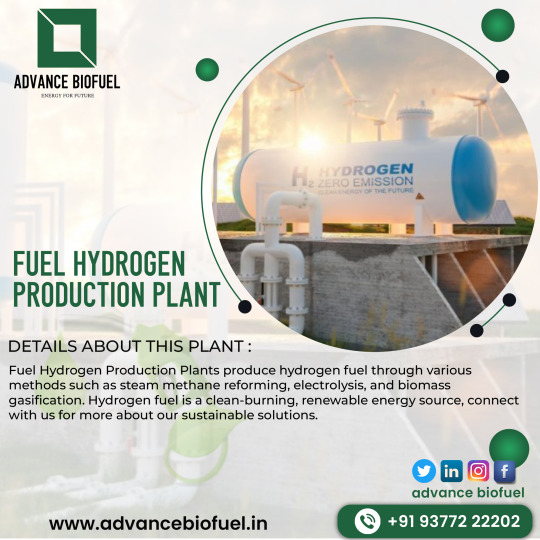#renewablefuels
Explore tagged Tumblr posts
Photo

F1 CEO vows there will never be an electric car on the grid - Autoblog F1 CEO Stefano Domenicali said the sport is pursuing sustainable fuels instead of electric powertrains for its next major rules change in 2026. https://www.autoblog.com/2023/03/01/f1-will-never-have-electric-cars-ceo-says/ #internalcombustionengine #internalcombustion #newengines #newengine #engines #engine #renewablefuels #renewablefuel #renewablepetrol #diesel #petrol #syntheticfuels #synthfuels #synthfuel #syntheticfuel #sustainablefuel #sustainablefuels #efuel #epetrol #petroleum #egas #dieselhead #dieselheads #petrolhead #petrolheads #hydrogen #hydrogencombustion #greenhydrogen #transport #transportation https://www.instagram.com/p/CpQoh1Itn6M/?igshid=NGJjMDIxMWI=
#internalcombustionengine#internalcombustion#newengines#newengine#engines#engine#renewablefuels#renewablefuel#renewablepetrol#diesel#petrol#syntheticfuels#synthfuels#synthfuel#syntheticfuel#sustainablefuel#sustainablefuels#efuel#epetrol#petroleum#egas#dieselhead#dieselheads#petrolhead#petrolheads#hydrogen#hydrogencombustion#greenhydrogen#transport#transportation
2 notes
·
View notes
Text

From traditional analytics to innovative data solutions: How the pandemic transformed oil market analysis. Follow Kurush Mistry's insights on navigating market shifts in the energy sector. 🛢️📊
#OilMarketAnalysis#EnergyTransition#RenewableFuels#MarketIntelligence#AlternativeData#Sustainability
0 notes
Text
Examining the Role of (NYSE:VLO) in Energy Refining
Valero Energy Corporation (NYSE:VLO) is a leading independent petroleum refiner and supplier of renewable fuels. With operations spanning across refining, marketing, and ethanol production, the company focuses on delivering efficient energy solutions. Its commitment to technological advancements and sustainability continues to shape the evolving landscape of fuel production and distribution.
0 notes
Link
#AdvancedCleanTransportationExpo#batteryelectricvehicles#BEVs#Chevron#CNG#Commercialfleets#commercialvehiclefleets#compressednaturalgas#Dana#Exelon#Ford#Futurride#hydrogenfuel#LasVegas#PenskeTransportationSolutions#renewablediesel#renewablefuels#renewablenaturalgas#Rivian#RNG#S&PGlobalMobility#StateofSustainableFleetsMarketBrief#sustainablemobility#TRCCompanies#U.S.DOE#VolvoTrucksNorthAmerica#zeroemissions
0 notes
Text

Which industries need Hydrogen?
Hydrogen Industries
Hydrogen has the potential to be a useful energy source for many different sectors. Hydrogen is a clean, versatile solution that appeals to a wide range of industries. The following sectors require hydrogen:
Energy and Power Generation:
Hydrogen has a lot to offer the energy sector, especially power generation. The only result of using hydrogen as a fuel in hydrogen fuel cells is water vapor, which may be used to generate electricity. This could encourage the creation of cleaner energy and assist lower greenhouse gas emissions.
By 2050, hydrogen could supply 18% of the world's energy needs, according to the International Energy Agency (IEA).
According to the Hydrogen Council, investments in hydrogen-related projects might total $280 billion by 2030.
Download- https://www.marketsandmarkets.com/industry-practice/RequestForm.asp
Hydrogen Future Growth in Energy and Power Generation Industry:
It is anticipated that hydrogen will be crucial to the power sector's decarbonization. Hydrogen has the potential to serve as a means of storing surplus electricity and offering grid balancing functions as renewable energy sources such as solar and wind power gain popularity.
In the upcoming years, it is anticipated that the development of hydrogen-based power plants, such as hydrogen fuel cells and gas turbines, as well as the integration of hydrogen into already-existing power networks would accelerate.
The production of electricity using hydrogen can improve energy security, lessen dependency on fossil fuels, and help meet climate goals.
Transportation:
Hydrogen has applications in the transportation sector, ranging from cars and trucks to buses and trains and even ships on the ocean. With a greater driving range and quicker refueling periods than conventional batteries, hydrogen fuel cells can power electric cars. Hybrid fuels, like hydrogenated vegetable oil, which may be used in internal combustion engines, can also be made using hydrogen.
By 2050, 400 million automobiles and 20 million trucks might run on hydrogen, according to the Global Hydrogen Council.
The European Commission plans to have 1,000 hydrogen refueling stations and 6 million hydrogen-powered cars by 2024.
Hydrogen Future Growth in Transportation Industry:
The usage of hydrogen as a fuel is anticipated to increase significantly in the transportation sector. When compared to battery-electric vehicles, hydrogen fuel cell electric vehicles (FCEVs) have advantages including greater driving ranges and quicker refueling periods.
Governments and automakers are funding the construction of hydrogen infrastructure and encouraging the creation and use of FCEVs.
The transportation sector can benefit from the increase of hydrogen applications because to its versatility, as hydrogen can be employed in buses, trucks, trains, and maritime vessels.
Chemical Industry:
The chemical industry needs hydrogen as a feedstock. Several processes, including the synthesis of methanol, ammonia, and other compounds, involve its usage. In order to make fertilizers, refine petroleum, and make plastics and polymers, hydrogen is an essential component.
Over 70 million metric tons of chemicals are produced each year using hydrogen, according to the International Energy Agency.
As per the Global Hydrogen Council, 10% of methanol and 70% of ammonia worldwide are produced using hydrogen.
Hydrogen Potential in Chemicals Industry:
Applications relating to hydrogen are expected to increase significantly in the chemical industry. It is anticipated that there would be a rise in the need for hydrogen as a feedstock for chemical processes such as the synthesis of methanol and ammonia.
The shift to hydrogen, a cleaner substitute, will be fueled by the need to cut greenhouse gas emissions in the chemical industry and the emphasis on sustainability.
As the chemical industry strives to become carbon neutral, green hydrogen—produced from renewable sources—is probably going to become more and more popular.
Oil Refining:
Hydrogen is necessary for a number of refining operations in the oil refining sector. Crude oil is treated with hydrogen to remove sulfur and impurities and to make lighter, more valuable products like diesel and gasoline from heavier crude oil.
The Hydrogen Council calculates that 10% of the world's oil refining process uses hydrogen, generating a market value of more than $20 billion annually.
According to the International Energy Agency, hydrogen might contribute to an 80% reduction in carbon dioxide emissions from the refining of oil.
Hydrogen Potential Growth in Chemicals Industry:
In order to lessen its carbon impact, the oil refining sector is anticipated to progressively transition to hydrogen-based procedures.
The use of hydrogen in oil refining operations will be fueled by the desire to create cleaner fuels and stricter environmental laws.
The upgrading, processing, and sulfur content reduction of heavier crude oil will be greatly aided by hydrogen technologies such as hydrocracking and hydrogenation.
Steel and Metal Production:
Hydrogen presents a viable and environmentally friendly substitute for coal in the steel industry's steelmaking process. Carbon dioxide emissions can be greatly decreased by switching to hydrogen in place of coal. In order to create high-purity iron for the manufacture of steel, iron ore can also be reduced directly with hydrogen.
6. million metric tons of hydrogen-powered low-carbon steel are to be produced by the European Commission by 2030.
By 2030, the steel sector alone would need up to 1.7 million metric tons of hydrogen annually, according to the Hydrogen Council.
Hydrogen Future Growth in Steel and Metal Production Industry:
Direct reduction—a method of producing steel—is being aggressively investigated by the steel industry as a potential substitute for coal.
Carbon dioxide emissions may be greatly decreased and the sustainability of steel manufacturing can be improved by hydrogen-based direct reduction methods.
Climate targets, government incentives, and developments in hydrogen technology are projected to hasten the shift in the coming years towards hydrogen-based steel production.
Aerospace and Defense:
Hydrogen is being investigated by the aerospace and defense industries as a possible fuel for rockets and airplanes. For a variety of aerospace applications, hydrogen fuel cells can deliver effective and lightweight power, minimizing emissions and dependency on fossil fuels.
The use of hydrogen fuel cells to power rockets and spacecraft has been investigated by NASA for a number of years.
With plans to begin commercial flight by 2035, Airbus has developed hydrogen-powered aircraft ideas.
Hydrogen Growth Opportunities in Aerospace and Defense Industry:
Hydrogen-based technology research and development is being funded by the aerospace and defense industries for use in rocket and aircraft propulsion.
Because hydrogen fuel cells are lightweight and have a high energy efficiency, they are a popular choice for space and aviation applications.
The aerospace and defense industries are predicted to use hydrogen due to the increased emphasis on lowering emissions and the requirement for more environmentally friendly propulsion systems.
Energy Storage and Grid Balancing:
Hydrogen finds application in grid balancing and energy storage. By using electrolysis to create hydrogen from excess electricity produced by renewable sources, hydrogen can be stored for later use or converted back into electricity as necessary, which helps to stabilize the electrical grid.
By 2050, hydrogen is expected to provide 3.6 exajoules of energy storage capacity, according to the International Renewable Energy Agency (IREA).
By 2030, 40 gigawatts of electrolyzers are expected to be installed as part of the European Commission's Hydrogen Strategy to produce hydrogen.
Hydrogen Growth Opportunities in Energy Storage and Grid Balancing Industry:
As renewable energy output increases, there is an increasing demand for energy storage options.
Hydrogen has the capacity to act as a large-scale energy storage medium, enabling the storage and release of excess renewable energy as needed.
The advancement of hydrogen storage infrastructure and sophisticated electrolysis technologies will support the future expansion of hydrogen in energy storage and grid balancing.
These are only a few sectors of the economy that hydrogen can help. The need for hydrogen is predicted to increase as the global economy continues to transition to a low-carbon one, and new sectors and uses might also develop.
Read More - https://www.marketsandmarkets.com/industry-practice/hydrogen/hydrogen-industries
0 notes
Text

Fuel Hydrogen Production Plants produce hydrogen fuel through various methods such as steam methane reforming, electrolysis, and biomass gasification. Hydrogen fuel is a clean-burning, renewable energy source, conntect with us for more about our sustainable solutions.
#AdvanceBiofuel#HydrogenProduction#CleanEnergy#RenewableFuel#SustainableSolutions#HydrogenTechnology#GreenEnergy#FuelingTheFuture#HydrogenPlant#EcoFriendlyFuel#CarbonNeutral#CleanTech#GreenSolutions#EnergyEfficiency
0 notes
Text
#biofuels#biofuel#biodiesel#renewableenergy#sustainability#environment#biomass#fuel#renewablefuel#renewable#usedcookingoil#cookingoil#cleanenergy#energy#alternativefuel#restaurant#greenenergy#bioenergy#restaurants#hotels#cafes#bars#greenfuel#wisconsin#smallbusiness#cafe#bar#wisconsinrestaurants#hotel#bluehoney
0 notes
Text
Algae-Based Biofuel Market to Reach $9.8B by 2034 at 8.6% CAGR
Algae-Based Biofuel Production Market is gaining momentum as the world shifts towards sustainable and renewable energy sources. Projected to grow from $XX billion in 2024 to $XX billion by 2034, the market is driven by increasing demand for low-carbon fuels, advancements in biotechnology, and government incentives promoting bioenergy solutions.
To Request Sample Report: https://www.globalinsightservices.com/request-sample/?id=GIS10838 &utm_source=SnehaPatil&utm_medium=Article
Algae-based biofuels offer a high-yield, carbon-neutral alternative to fossil fuels. Unlike traditional biofuels, algae can be cultivated in non-arable land and wastewater, making it a sustainable and scalable energy source. Industries such as aviation, automotive, and power generation are actively investing in algae-derived biodiesel, bioethanol, and biogas to reduce carbon footprints and achieve energy security.
🌿 Key Market Drivers:
✅ High Yield & Fast Growth — Algae can produce 30–50 times more oil per acre than traditional crops like soybeans and palm. ✅ Carbon Sequestration — Algae absorbs CO₂ during growth, making it a net-zero carbon fuel option. ✅ Non-Competition with Food Supply — Unlike corn and sugarcane-based biofuels, algae cultivation does not impact food production. ✅ Growing Adoption in Aviation & Marine Sectors — Airlines and shipping companies are increasingly turning to algae biofuels to meet sustainability targets. ✅ Advancements in Bioreactors & Genetic Engineering — Cutting-edge photo-bioreactors, genetic modifications, and AI-driven optimization are enhancing biofuel yield and efficiency. ✅ Government Initiatives & Investments — Countries are offering grants and subsidies to accelerate algae-based biofuel commercialization.
🌍 Regional Market Insights:
🌱 North America: Leading in R&D and pilot projects, with strong government backing. 🌱 Europe: Focus on biofuel mandates and carbon reduction policies driving adoption. 🌱 Asia-Pacific: Rapid industrial growth and high energy demand fostering algae biofuel development. 🌱 Latin America & MEA: Emerging markets with vast potential for algae cultivation and biofuel production.
With its eco-friendly benefits and high energy potential, the Algae-Based Biofuel Production Market is paving the way for a greener and more sustainable energy future. 🚀♻️
#AlgaeBiofuel #SustainableEnergy #GreenFuel #BioenergyRevolution #CarbonNeutral #RenewableFuels #FutureOfEnergy #AlgaePower #AlternativeFuel #BiofuelTechnology #CleanEnergy #EcoFriendlyTech #CarbonSequestration #ClimateAction #LowCarbonFuel #AviationFuel #GreenShipping #EnergyTransition #NetZero #Biodiesel #Biogas #GreenInnovation #SmartSustainability #Bioreactors #SyntheticBiology #Decarbonization #WasteToEnergy #CircularEconomy #NextGenEnergy #PoweringTheFuture
0 notes
Text
World Biofuel Day 2023 : Shri Abhai Bhargava | विश्व जैव ईंधन दिवस : श्री अभय भार्गव
As we all know that World Biofuel Day is observed on August 10 every year to create awareness about the significance of biofuels in promoting sustainable development and reducing carbon emissions. The day highlights the importance of using renewable energy sources derived from biomass and organic materials. Biofuels have the benefits of reducing import dependency on crude oil, cleaner environment, and additional income to farmers and employment generation in rural areas.
On World Biofuel Day 2023, To make people aware of the importance of Biofuel for nature as well as human being, we sharing valuable views of Shri Abhai Bhargava, Capability Centre Manager - Native Software Engineering and Experience Design in Shell (Globally), Head of Innovation - Shell UK, Shell Centre, London SE1 7NA, United Kingdom, in public interest.
#AbhaiBhargava #WorldBiofuelDay2023
#biofuel #biodiesel #renewableenergy #sustainability #biofuels #environment #fuel #biomass #renewable #greenenergy #energy #renewablefuel #usedcookingoil
#NarendraModi #PMOIndia
#yogiadityanath
#HelpUTrust #HelpUEducationalandCharitableTrust
#KiranAgarwal #DrRupalAgarwal #HarshVardhanAgarwal
www.helputrust.org
0 notes
Text
World Biofuel Day 2023 : Shri Abhai Bhargava | विश्व जैव ईंधन दिवस : श्री अभय भार्गव
As we all know that World Biofuel Day is observed on August 10 every year to create awareness about the significance of biofuels in promoting sustainable development and reducing carbon emissions. The day highlights the importance of using renewable energy sources derived from biomass and organic materials. Biofuels have the benefits of reducing import dependency on crude oil, cleaner environment, and additional income to farmers and employment generation in rural areas.
On World Biofuel Day 2023, To make people aware of the importance of Biofuel for nature as well as human being, we sharing valuable views of Shri Abhai Bhargava, Capability Centre Manager - Native Software Engineering and Experience Design in Shell (Globally), Head of Innovation - Shell UK, Shell Centre, London SE1 7NA, United Kingdom, in public interest.
#AbhaiBhargava #WorldBiofuelDay2023
#biofuel #biodiesel #renewableenergy #sustainability #biofuels #environment #fuel #biomass #renewable #greenenergy #energy #renewablefuel #usedcookingoil
#NarendraModi #PMOIndia
#yogiadityanath
#HelpUTrust #HelpUEducationalandCharitableTrust
#KiranAgarwal #DrRupalAgarwal #HarshVardhanAgarwal
www.helputrust.org
0 notes
Text
World Biofuel Day 2023 : Shri Abhai Bhargava | विश्व जैव ईंधन दिवस : श्री अभय भार्गव
As we all know that World Biofuel Day is observed on August 10 every year to create awareness about the significance of biofuels in promoting sustainable development and reducing carbon emissions. The day highlights the importance of using renewable energy sources derived from biomass and organic materials. Biofuels have the benefits of reducing import dependency on crude oil, cleaner environment, and additional income to farmers and employment generation in rural areas.
On World Biofuel Day 2023, To make people aware of the importance of Biofuel for nature as well as human being, we sharing valuable views of Shri Abhai Bhargava, Capability Centre Manager - Native Software Engineering and Experience Design in Shell (Globally), Head of Innovation - Shell UK, Shell Centre, London SE1 7NA, United Kingdom, in public interest.
#AbhaiBhargava #WorldBiofuelDay2023
#biofuel #biodiesel #renewableenergy #sustainability #biofuels #environment #fuel #biomass #renewable #greenenergy #energy #renewablefuel #usedcookingoil
#NarendraModi #PMOIndia
#yogiadityanath
#HelpUTrust #HelpUEducationalandCharitableTrust
#KiranAgarwal #DrRupalAgarwal #HarshVardhanAgarwal
www.helputrust.org
0 notes
Text

Decoding the modern oil market: How big data and alternative analytics are reshaping industry insights. Learn from Kurush Mistry's expertise in navigating market complexities in a post-pandemic world. 📊🛢️
0 notes
Text
Solar Fuel: $1.2B to $5.8B by 2033, CAGR 17.2%
Solar Fuel Market : Solar fuel technology is unlocking a new frontier in renewable energy by directly converting sunlight into usable fuel, offering a groundbreaking solution for energy storage and carbon-free power. By mimicking natural photosynthesis, solar fuel systems harness the sun’s energy to produce hydrogen, methane, or other fuels that can be stored and transported. This process eliminates the need for traditional fossil fuels, creating a sustainable energy cycle that significantly reduces carbon emissions. As advancements in solar fuel research continue, this technology promises to become a game-changer for industries looking to decarbonize while meeting the growing global energy demands.
To Request Sample Report : https://www.globalinsightservices.com/request-sample/?id=GIS32503 &utm_source=SnehaPatil&utm_medium=Article
The potential of solar fuel goes beyond just clean energy production. By providing a means of storing solar power for later use, it can help stabilize energy grids, making renewable energy more reliable and accessible even during cloudy days or nighttime. Solar fuel also has the ability to transform sectors such as transportation, heavy industry, and power generation, where renewable electricity alone may not suffice. As countries around the world seek solutions for long-term sustainability, solar fuel is emerging as a key player in the quest for a cleaner, greener energy future.
#SolarFuel #CleanEnergy #SustainablePower #HydrogenEnergy #GreenInnovation #CarbonFree #SolarTech #RenewableEnergy #EnergyStorage #Decarbonization #EcoFriendlyTech #SolarHydrogen #RenewableFuel #FutureOfEnergy #GreenFuture
0 notes
Text
"Fueling Innovation: Green Ammonia as a Renewable Fuel Source"
Green ammonia refers to ammonia produced using renewable energy sources, such as wind, solar, or hydroelectric power, instead of traditional fossil fuels.
This sustainable approach to ammonia production aims to reduce carbon emissions and mitigate environmental impact, addressing concerns related to climate change and air pollution. Green ammonia is produced through a process called electrolysis, where water is split into hydrogen and oxygen using renewable electricity. The hydrogen is then combined with nitrogen extracted from the air to produce ammonia through a process known as Haber-Bosch synthesis. By eliminating the use of fossil fuels in the production process, green ammonia offers a pathway to decarbonize various sectors, including agriculture, transportation, and energy storage. It can be used as a clean fuel for power generation, shipping, and transportation, as well as a carbon-free fertilizer in agriculture. The growing interest in green ammonia reflects the global commitment to transitioning towards sustainable and renewable energy sources, paving the way for a cleaner and more sustainable future.
#GreenAmmonia #SustainableEnergy #RenewableAmmonia #Decarbonization #CleanEnergy #ClimateAction #RenewableFuels #GreenChemistry #AgriculturalInnovation #EnergyTransition #CarbonFree #NetZero #RenewableStorage #CleanShipping #EnvironmentalSustainability
0 notes
Text
Lucky-Tech Membranes Pvt Ltd: Leading Biogas Balloon Supplier in Mumbai
Listen to one of the leading Biogas Balloon suppliers in Mumbai #Biogas #Sustainability #renewableenergy #renewablefuels
An exclusive interview with Lucky-Tech Membranes Private Limited was established on 28 July 2020 and is located in Mumbai City, Maharashtra. The company specializes in the production and supply of engineered PVC/PVDF coated fabrics for various applications such as tensile membrane structures, tents, truck side curtains, truck canopies, high-speed roll-up doors, and many others. We are into���

View On WordPress
0 notes
Text

Hydrogen Storage and Transportation Technologies
Hydrogen Storage and Transportation Technologies - Cost and Supply Chain Analysis
Current and evolving hydrogen storage and transportation technologies aim to address the challenges of storing and transporting hydrogen efficiently and safely.
Download-https://www.marketsandmarkets.com/industry-practice/RequestForm.asp
In this field, the following are some noteworthy technologies:
Compressed Gas Storage: Compressed gas hydrogen can be kept in high-pressure tanks or cylinders. Normally, the gas is compressed to 350–700 bar of pressure. For small-scale uses, such industrial and hydrogen refueling stations, compressed gas storage is a well-established technique.
Liquid Hydrogen Storage: At very low temperatures (-253°C or 20 K), hydrogen can be liquefied. One may store more hydrogen in a given container by using liquid hydrogen since it has a higher energy density than compressed gas storage. Both large-scale storage at hydrogen production and distribution facilities and aeronautical applications frequently use it.
Metal Hydride Storage: Hydrogen can be absorbed by metal hydrides, which then release it when heated. The benefit of safe and reversible hydrogen storage is provided by this method. However, compared to compressed gas or liquid hydrogen storage, metal hydrides usually have a lesser hydrogen storage capacity, which restricts their applicability to particular uses.
Chemical Hydride Storage: Through chemical processes, hydrogen can be stored in chemical hydrides like ammonia (NH3) or organic hydrides. They could provide simpler handling and transportation as well as high-density hydrogen storage. When necessary, chemical hydrides can be transformed back into hydrogen by means of a catalyst or thermal energy.
Hydrogen Carriers: Chemical substances that have the ability to release hydrogen on demand are known as hydrogen carriers. One illustration is the use of reversible hydrogenation and dehydrogenation to store hydrogen in liquid form using liquid organic hydrogen carriers (LOHC). Hydrogen carriers can make use of the current infrastructure, such as tanker ships and pipelines, and provide the benefit of simpler and safer transportation.
Cost effectiveness is dependent on a number of variables, including the size of the transportation or storage system, the maturity of the technology, and the demands of the particular application. Currently, liquid hydrogen storage is frequently used in larger-scale storage facilities due to its higher energy density, whereas compressed gas storage is more economical for smaller-scale applications. Ongoing developments and economies of scale, however, should result in lower costs for cutting-edge technologies like hydrogen carriers and chemical hydrides.
Transport and storage technologies for hydrogen relate to the systems and procedures used to move and store hydrogen gas, which is a flexible and clean energy source. Because of its high energy content and the fact that its combustion or reaction with oxygen produces only water vapor as a byproduct, hydrogen is seen as a promising energy source for a variety of uses, including fuel cells for power production, industrial processes, and transportation.
For hydrogen to be widely used as a clean and sustainable energy source, these storage and transportation technologies must be developed and improved. Scientists and engineers are still investigating novel materials and techniques to improve the economic viability, safety, and efficiency of hydrogen storage and transportation systems.
To incorporate these technologies into the existing hydrogen supply chain, a number of factors need to be taken into account:
Infrastructure Development: Pipelines, storage tanks, and refueling stations are examples of storage and transportation infrastructure that needs to be built or modified to support the particular storage and transportation strategies selected.
Safety and Regulatory Compliance: To guarantee the safe handling, storage, and transit of hydrogen in its many forms, strict safety protocols and laws must be in place.
System Integration: It is imperative that the storage and transportation technologies are smoothly incorporated into the current supply chain, taking into account aspects such as equipment and infrastructure compatibility.
Logistics and Distribution Planning: To transfer hydrogen from production facilities to end-use applications efficiently, optimal logistics and distribution networks must be established, taking into account considerations such as distance, demand, and storage requirements.
In order to overcome the technological, financial, and legal obstacles, infrastructure developers, legislators, and industry players must work together to integrate these technologies into the present supply chain.
Read More- https://www.marketsandmarkets.com/industry-practice/hydrogen/storage-transportation-technologies
#HydrogenStorage#H2Transport#CleanEnergyStorage#HydrogenTech#RenewableFuel#H2Infrastructure#GreenTransportation#HydrogenEconomy
0 notes